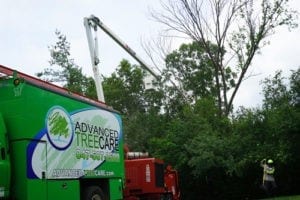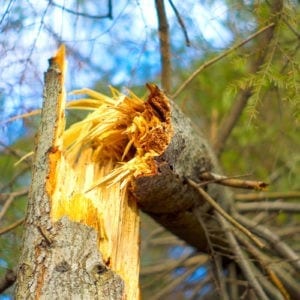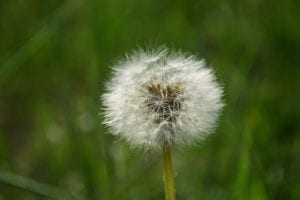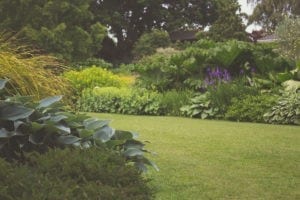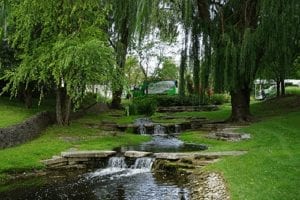Decrease Summer Watering Stress with Tree Pruning
Summer is a wonderful season, especially here in Chicago. It’s our reward after months and months of winter. But the heat of high summer can be extreme. As temps soar, you can head for the air-conditioned house—but your trees can’t. They have to endure what Mother Nature has in store for them. As a homeowner, though, you can offset some of summer’s stress on your trees with pruning and maintenance.
Summer Watering Stressors
When temperatures rise—and they often top 90 in July and August—shade, ornamental, and fruit trees all suffer. The increase in heat prompts the plant to divert resources to its leaves. Why? You can slather on the sunscreen, but a tree can’t. Moving resources to its leaves is one way to reduce or prevent scorching.
Trees are also particularly sensitive to the water table in the ground. If we go through a period with little or no rain, the water table changes. As a result, soil moisture decreases. Put simply, your trees are thirsty, and there is less water for them to access to drink.
In addition, other plants around your trees are competing for resources in the summer. Spring and summer are intense periods of growth and reproduction for plants. All that flowering and fruit-bearing and growing puts a lot of demand on plants’ resources. The grass, shrubs, flowers, ornamental grasses, berry bushes, and vegetables in a yard are all competing for water. If water becomes scarce, trees—as well as other plants—will be stressed.
Finally, summer—as you know well—is construction season in our area. If you’re undertaking a home improvement project on your property, you could be introducing stress to your trees’ root systems. Damage to the extensive root systems from digging and construction could compromise your trees’ ability to reach essential moisture.
Summer Pruning and Care to Reduce Stress
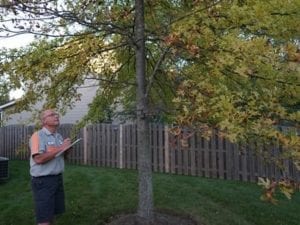
So what can you do to offset these stressors? First—and most importantly—you should hire a professional tree service led by a certified arborist, such as Advanced Tree Care. Summer is not a normal season for tree pruning, so it’s important that you entrust this work to an expert.
Summer pruning can help protect your trees from stress by ensuring that all of the tree’s resources go into healthy, undamaged limbs. An experienced tree service will be able to ensure your trees are properly cared for all year long. When you hire Advanced Tree Care, our staff will:
- Examine your trees for signs of stress as well as broken, dead, or otherwise damaged limbs
- Carefully prune any trees requiring it during the summer season, giving them what they need to thrive as well as potentially protecting them from storm damage
- Prune or shape trees that may be encroaching upon each other’s space
- Recommend an optimal watering schedule to keep your trees healthy
- Recommend further maintenance or treatment for pests to promote health
Advanced Tree Care combines top-notch equipment, cutting-edge technology, and well-trained staff to provide emergency tree removal and tree maintenance services. With a presence in nine counties and two states, we work daily to provide unparalleled customer service, safety, and efficiency—as well as the expertise to beautify your landscaping and community. Advanced Tree Care isn’t just our name—it’s also our purpose!
